We invite the community to join us this Thursday, December 8 for a Barn Raising and Open House from 7:30 am to 3:00 pm. Watch the crew assemble the McKie Barn, and warm up in the Reuben Wait Barn with hot cider, coffee and donuts. Those that are able are invited to join us at 7:45 am for a barn raising blessing.

About the McKie Barn and Restoration: by Luke Larson
Back in July, I was contacted about a barn on a hillside farm in Cambridge, New York. It was one of five incredible barns, all of which were in serious disrepair when new owners took over the property last year. They decided they had to focus their energy and resources on saving the other barns, and generously offered this structure to us for use at our shop location.


We disassembled the barn carefully in August, labeling each beam, brace, and board.




After the take down, we spent about a month carefully restoring the frame.
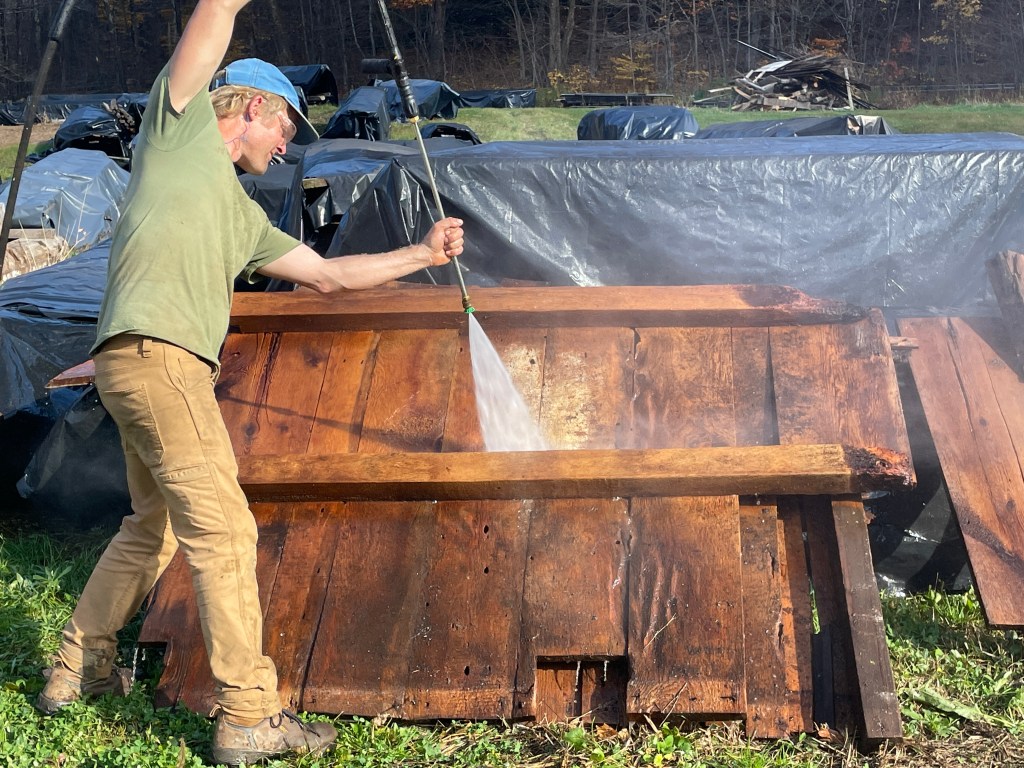
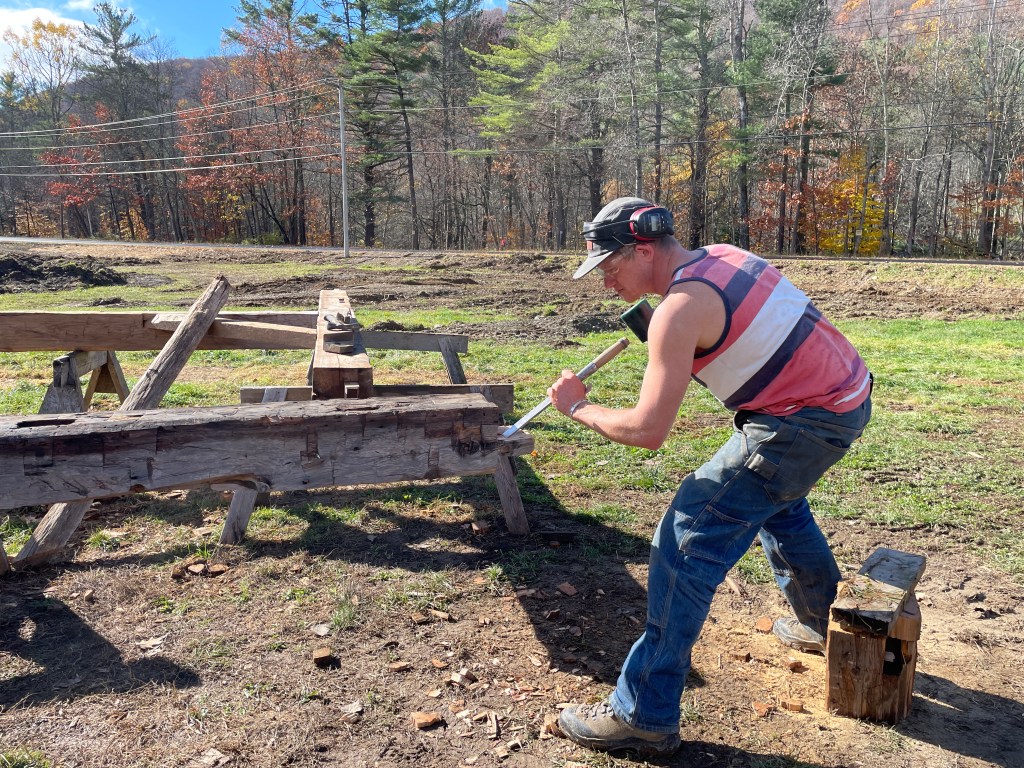
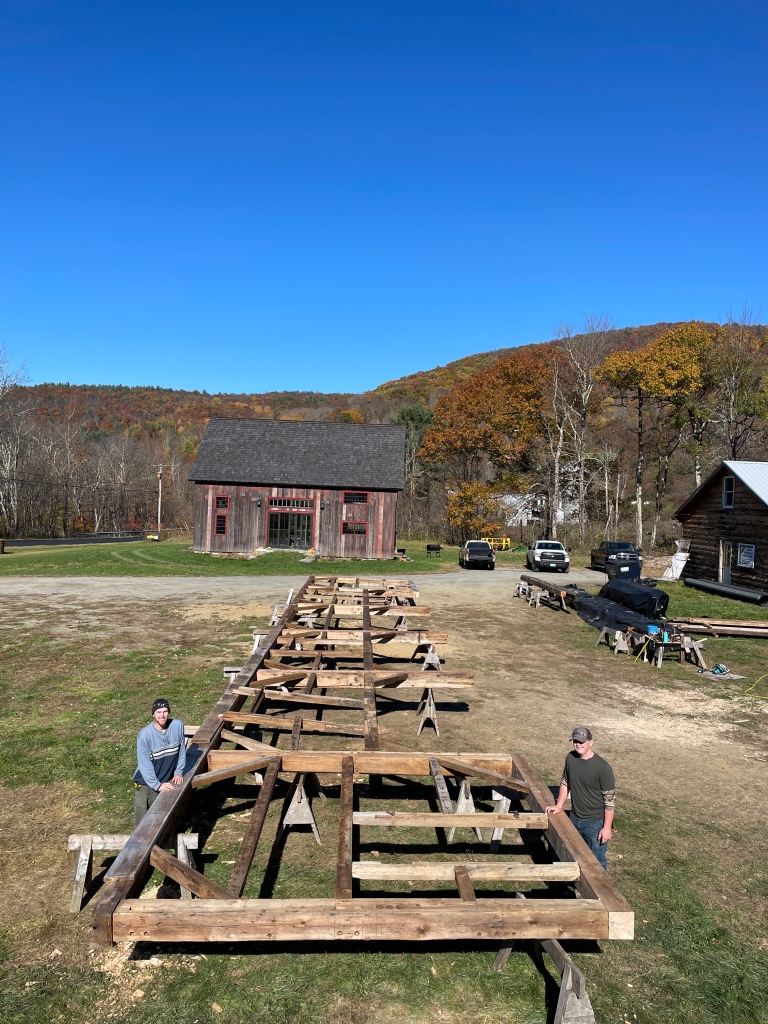

Next, we needed a foundation upon which to place this barn. I was grateful that our use of this barn allowed us to match the original one. I called my friends Ethan and Jeb at Vermont Landscaping and Stonework, and they were up for the challenge!

Using stone from our shop property, they created a dry laid rock foundation, and it is beautiful.


We installed the sills during one of the first Vermont snow squalls of the season!
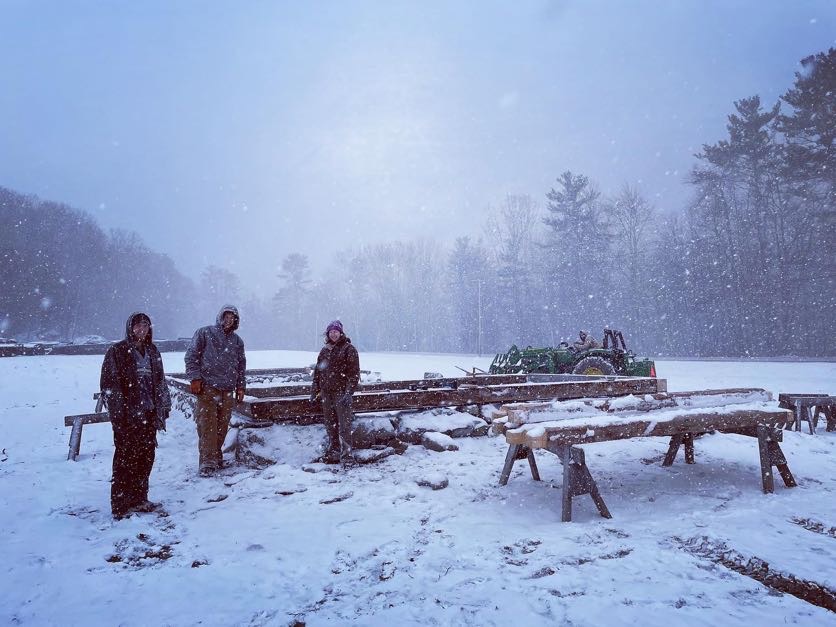

While the foundation was being crafted, and the barn restored and washed, we have been able to learn some details about the farm in Cambridge and the family that built the barn. Our first resource has been “The Family Letters: A Portrait of an American Family Though Letters From the 18th and 20th Century” edited by John T. B. Mudge. We are excited to dive deeper into the history.
John McKie was born in Bargaly Glen, Scotland, in 1705. At the age of sixty-two, he emigrated to America with his teenage sons and settled in the hills near Cambridge, reportedly because the hilly landscape reminded him of Scotland. James, one of his sons, joined the revolutionaries and had a daring escape from the British at Skenesboro near the south end of Lake Champlain. James was one of just thirteen soldiers left for a time to man the garrison which came under attack while reinforcements were on the way. He jumped into the Wood Creek and swam underwater to a clump of branches and ice, where he hid in the frigid water until the British withdrew.
Two year later, at the age of twenty-two, James took over management of the family farm when his father John died. We expect that it was James who oversaw the construction of the eighty foot, seven bent barn, sometime in the first decades of the 1800s.

This barn was built to house sheep, a flock which no doubt the Scottish family was well accustomed to when the wool industry boomed in the first half of that century. There were four run-in bays with low ceilings and a continuous wooden hay rack in the back. At each end, an enclosed lambing bay had wooden water troughs. We will be restoring one lambing room back as close to original as possible, complete with replicating this rotten wooden water trough.

A full second floor, held in place by an incredible five-sided ridge beam, was used to store the winter supply of hay. In the next photo, we had installed plywood over the original, somewhat rotten floor, to keep us safe while we worked.

We are thrilled and grateful to be the new caretakers for this incredible barn and to give it a new home in Middletown Springs, Vermont! The barn will be of great assistance in our restoration work of other structures, and we look forward to setting up displays of agricultural artifacts from past centuries.
If you are nearby and able, please join us in celebration of this barn raising. We will begin the day with a blessing and prayer for safety at 7:45. Watch the crew work and warm up in the Reuben Wait Barn with coffee and doughnuts. Stop in throughout the day to say hello!
Contact sara@greenmountaintimberframes.com with questions.
Green Mountain Timber Frames | 430 West Street, Middletown Springs, VT 05757 | www.greenmountaintimberframes.com/workshops-events














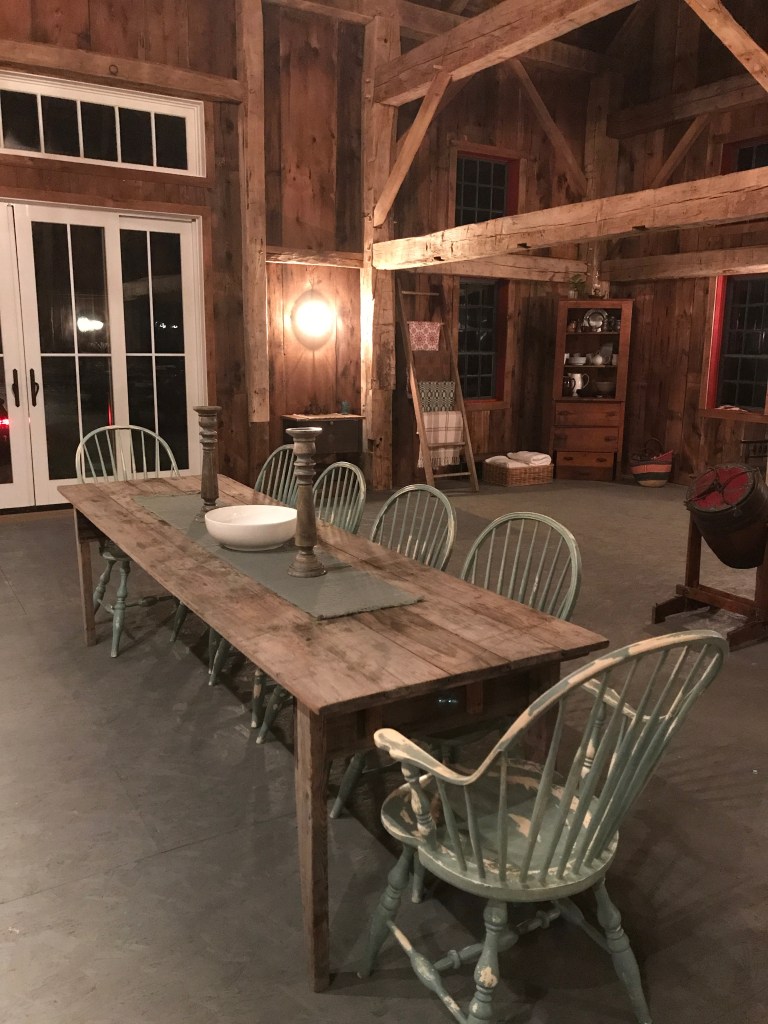

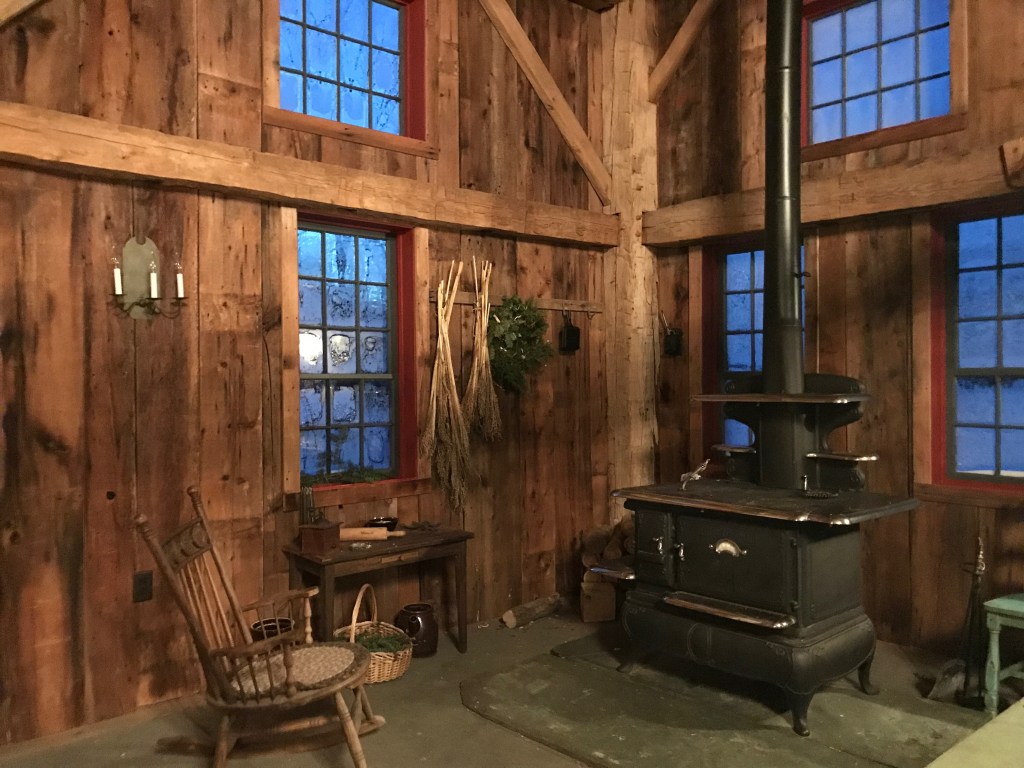


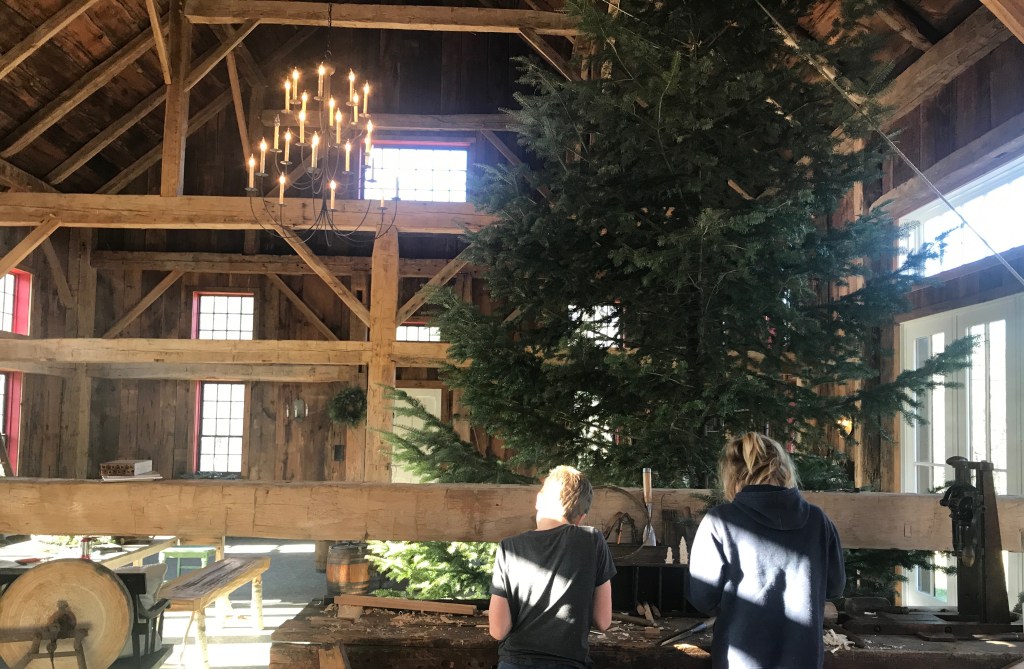
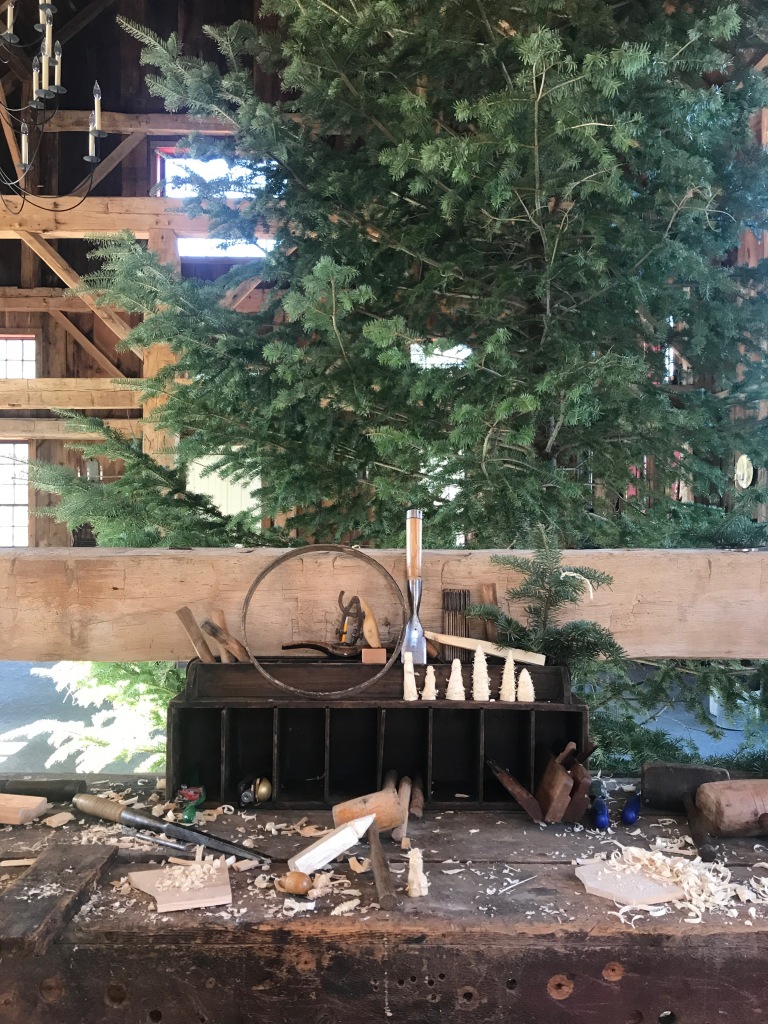





























































































 802.774.8972
802.774.8972



























































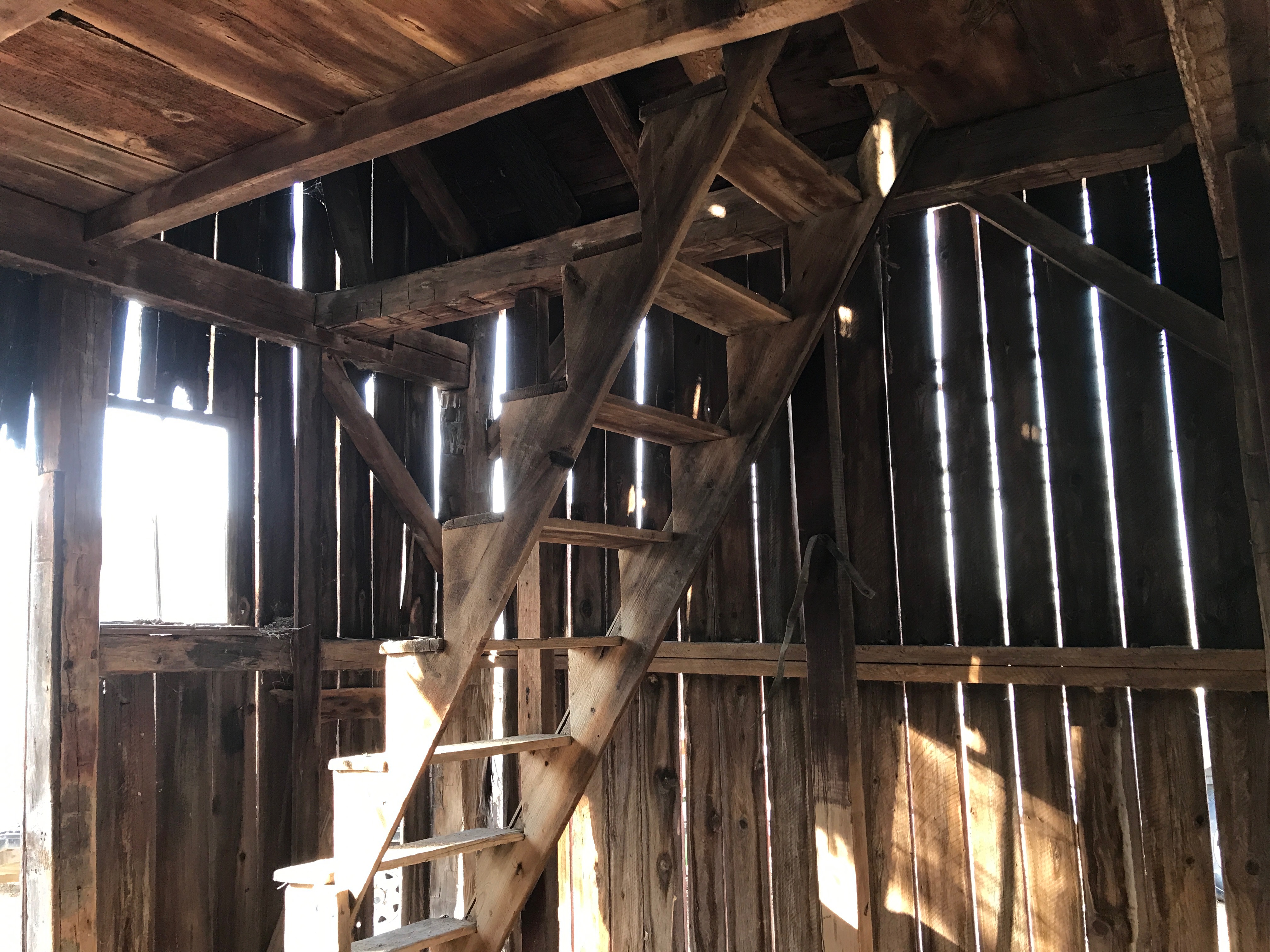


















 The barn’s foundation, roof and sills are deteriorated, and would be very difficult and costly to repair in place. We have purchased the barn and now it is in our court to take down the frame, restore it, and find a new home for this majestic and historic building.
The barn’s foundation, roof and sills are deteriorated, and would be very difficult and costly to repair in place. We have purchased the barn and now it is in our court to take down the frame, restore it, and find a new home for this majestic and historic building. The hay piled inside the barn had been hiding a very interesting feature of this barn. The smallest bay, which is where the animals were kept, had built in wooden gutters for removing manure.
The hay piled inside the barn had been hiding a very interesting feature of this barn. The smallest bay, which is where the animals were kept, had built in wooden gutters for removing manure. We made another discovery while opening up the walls of this barn. Between layers of siding, honey bees had built a hive at some point in the past.
We made another discovery while opening up the walls of this barn. Between layers of siding, honey bees had built a hive at some point in the past. We collected the brittle wax comb, and I am excited to make candles out of it. Once we find a new home for this barn and re-erect it, I can imagine a celebratory meal in the restored frame- lit by the wax of this bee hive.
We collected the brittle wax comb, and I am excited to make candles out of it. Once we find a new home for this barn and re-erect it, I can imagine a celebratory meal in the restored frame- lit by the wax of this bee hive.  As we removed the wide hemlock wall boards, we labeled each one so they can be installed back in the same location. Many of the timber boards are over 15 inches wide, and the patina on them is spectacular.
As we removed the wide hemlock wall boards, we labeled each one so they can be installed back in the same location. Many of the timber boards are over 15 inches wide, and the patina on them is spectacular.
 In order to be as safe as possible, we built a temporary second floor in the barn. This allows us to do most of the board and rafter removal from this deck rather than from the top of the roof or from long ladders. This barn is so large that it took fifty sheets of plywood to create this safe work platform!
In order to be as safe as possible, we built a temporary second floor in the barn. This allows us to do most of the board and rafter removal from this deck rather than from the top of the roof or from long ladders. This barn is so large that it took fifty sheets of plywood to create this safe work platform!  The effort building the deck paid off, as we removed and labeled each roof board.
The effort building the deck paid off, as we removed and labeled each roof board. Let me share a couple more interesting features of this barn:
Let me share a couple more interesting features of this barn: A good luck horseshoe was nailed to one side of the door opening.
A good luck horseshoe was nailed to one side of the door opening.  It was exciting to get lots of light on the upper queen system. These timbers support the rafters at mid-span, making the roof strong enough to carry the weight of all that slate as well as Vermont’s winter snow. There is a unique and beautiful scarf joint that was used to get the queen plates to span the whole 48 feet.
It was exciting to get lots of light on the upper queen system. These timbers support the rafters at mid-span, making the roof strong enough to carry the weight of all that slate as well as Vermont’s winter snow. There is a unique and beautiful scarf joint that was used to get the queen plates to span the whole 48 feet.
 While the queen plate is made out of two timbers, the main top plate that creates the eve of the building is not. Incredibly, these hand-hewn timbers are the full length of the barn at 48 feet and 2 inches! Imagine the size of the old-growth tree that was required, as well as the difficulty of getting these beams in place without the use of modern equipment.
While the queen plate is made out of two timbers, the main top plate that creates the eve of the building is not. Incredibly, these hand-hewn timbers are the full length of the barn at 48 feet and 2 inches! Imagine the size of the old-growth tree that was required, as well as the difficulty of getting these beams in place without the use of modern equipment.











 We had been called because the foundation under a large gunstock timber frame is crumbling, and the property owners would like to see this barn saved and re-homed before it deteriorates further. This barn was worth the long drive from our home base. The posts and timbers are beautiful, and even the braces are hand hewn.
We had been called because the foundation under a large gunstock timber frame is crumbling, and the property owners would like to see this barn saved and re-homed before it deteriorates further. This barn was worth the long drive from our home base. The posts and timbers are beautiful, and even the braces are hand hewn.  We will be carefully disassembling this beautiful and worthy barn in the coming months, after which we will restore the timber frame. Stay tuned for more information as we get this structure measured, drawn to scale, and listed as an available frame on our webpage.
We will be carefully disassembling this beautiful and worthy barn in the coming months, after which we will restore the timber frame. Stay tuned for more information as we get this structure measured, drawn to scale, and listed as an available frame on our webpage. There, next to the barn, was a decrepit old silo, with vines growing up the side. It looked like the turret of some old agricultural castle, and I pushed my way through wild grapes and wild cucumber vines to find the opening.
There, next to the barn, was a decrepit old silo, with vines growing up the side. It looked like the turret of some old agricultural castle, and I pushed my way through wild grapes and wild cucumber vines to find the opening.  The roof had collapsed and I could see vegetation reclaiming the interior. The old stone foundation was mossy and I could imagine the excitement of the farm crew many years ago as they laid these rocks in a neat circle to define the storage space for their crops- no doubt in between the daily chores of feeding the animals, tending the fields along the Connecticut River and milking the cows.
The roof had collapsed and I could see vegetation reclaiming the interior. The old stone foundation was mossy and I could imagine the excitement of the farm crew many years ago as they laid these rocks in a neat circle to define the storage space for their crops- no doubt in between the daily chores of feeding the animals, tending the fields along the Connecticut River and milking the cows.  Unlike most of the old wooden silos that have vertical boards held together with steel rings, this one had vertical studs with thin boards bent to match the radius inside and outside. A sumac tree had sprouted, and its upper branches were capturing the afternoon sunlight as I peered in. A single four pane window was in the top of the silo wall, and in the early days this would have let that same sunlight into the interior to illuminate for the farmer how much of the summer’s bounty remained as the winter months progressed. I am so glad we will be catching the large barn before it, too, is reclaimed by vines and trees.
Unlike most of the old wooden silos that have vertical boards held together with steel rings, this one had vertical studs with thin boards bent to match the radius inside and outside. A sumac tree had sprouted, and its upper branches were capturing the afternoon sunlight as I peered in. A single four pane window was in the top of the silo wall, and in the early days this would have let that same sunlight into the interior to illuminate for the farmer how much of the summer’s bounty remained as the winter months progressed. I am so glad we will be catching the large barn before it, too, is reclaimed by vines and trees. I asked about the little barn, and was granted permission to explore it. The owners had not been in it for a very long time, and suspected it was nothing that would be of interest or that could be salvaged. I went in for a closer look.
I asked about the little barn, and was granted permission to explore it. The owners had not been in it for a very long time, and suspected it was nothing that would be of interest or that could be salvaged. I went in for a closer look.
 The incredible durability of old-growth timbers was apparent as I inspected the hand-hewn timber frame. In spite of the trees pressing in, the frame is worthy of restoration, and we agreed to purchase this 14×18 foot frame. Once restored and erected on a new foundation, it will make a remarkable cabin with sleeping quarters on the second floor. We will be listing this corn crib on our webpage soon.
The incredible durability of old-growth timbers was apparent as I inspected the hand-hewn timber frame. In spite of the trees pressing in, the frame is worthy of restoration, and we agreed to purchase this 14×18 foot frame. Once restored and erected on a new foundation, it will make a remarkable cabin with sleeping quarters on the second floor. We will be listing this corn crib on our webpage soon. I cannot wait to spend a day inside this barn with our dedicated team doing our best to decipher and document the creative web of belt-driven machines and jigs. We will then begin popping out the hardwood pegs, disassembling the timber frame joinery, and labeling all of the wooden joints. In time, this frame too will have a new home and a continued evolution of usefulness. The constant variable throughout these progressions will be the stout integrity of the structure and its aesthetic beauty.
I cannot wait to spend a day inside this barn with our dedicated team doing our best to decipher and document the creative web of belt-driven machines and jigs. We will then begin popping out the hardwood pegs, disassembling the timber frame joinery, and labeling all of the wooden joints. In time, this frame too will have a new home and a continued evolution of usefulness. The constant variable throughout these progressions will be the stout integrity of the structure and its aesthetic beauty.


















 When we sided our barn using vintage boards, we cut six holes in the upper section. Copper flashing was used to keep water from going in. Five of the doors are faux, and the sixth has a hole that leads into a nesting box.
When we sided our barn using vintage boards, we cut six holes in the upper section. Copper flashing was used to keep water from going in. Five of the doors are faux, and the sixth has a hole that leads into a nesting box.












































































































 Today’s guest post comes from the talented author and illustrator,
Today’s guest post comes from the talented author and illustrator, 






























